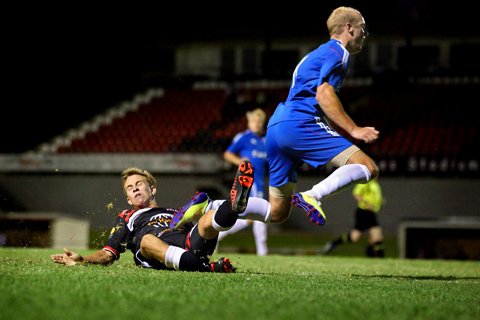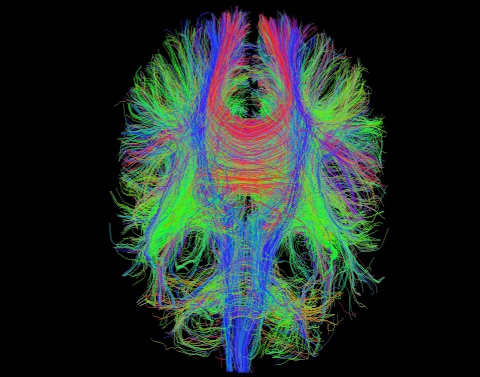Athletes Hanker for a Return to Playing Fields too Quickly after Concussion
An athlete’s whole career might be in danger if he or she returns to playing fields too quickly after a traumatic brain injury, i.e. concussion. Neurologist Olli Tenovuo’s group is researching whether a safe moment for returning to training could be determined with a blood test.

Athletes who suffer concussion often hanker for returning to playing fields quickly. In fact, many athletes downplay their symptoms. However, playing shortly after concussion might endanger the athlete’s whole career, says Specialist in neurology, Docent Olli Tenovuo from the University of Turku.
– After concussion, the athlete’s reaction speed and attention are not on a normal level for a while. If the athlete returns to playing fields shortly after the concussion, he or she has a significantly higher risk of getting a new injury before the old one is healed. These new injuries are particularly harmful to the brain, says Tenovuo.
Concussion happens when the brain rocks quickly from one side of the head to the other which strongly stretches the nerve paths in the brain. Concussion is usually followed by loss of consciousness or wooziness, memory loss and nausea. After the injury, the athlete should remember to rest for days or even weeks, depending on the injury, and return to training gradually and gently only after all the symptoms have disappeared.
– In earlier decades, it was mistakenly thought that the best rehabilitation is to return to practice as soon as possible. That is not true at all. The brain needs energy to heal. If training or playing takes too much energy from the brain, the healing process is slowed down or endangered entirely.
Players who have experienced many concussions or returned to playing fields too quickly can have permanently poorer reaction speed and memory.
The structure of the brain’s neural network can be better researched with diffusion tensor imaging than with earlier imaging methods.
Small and Recurrent Concussions Change the Structure of the Brain
According to the newest research results, also small and recurrent concussions can be harmful to the brain in the long run. Recently there have been many ongoing research projects that study, for example, the small, recurrent concussions experienced by American football players.
– In one research, American football players were scanned with diffusion tensor imaging before and after the playing season. Already during one season, the blows showed as changes in the networks of white matter in the brain also for those players who had not experienced actual concussions.
After their career, the American football players also have a higher risk of contracting the so-called chronic traumatic encephalopathy, which is a degenerative disease of the brain. The disease has many mental symptoms, for example depression. In the disease, tau proteins start to accumulate in certain parts of the brain.
– At the moment, this is a hot research topic in the United States. So far, researchers have not been able to stop the accumulation of tau proteins. However, now a new tracer has been developed which reveals in the imaging who is suffering from the accumulation of the tau protein.
Players of European football have fewer concussions. According to Tenovuo, for example repeated headbutts are not a risk factor that the players should be particularly worried about.
– After all, there are hardly any harmless hobbies. Young footballers have a far lesser kicking force and the ball is lighter as well so the impact with the head is rarely harmfully strong. In adults’ games, the situation can be different.
Concussions Show Differently in Adults and Children
It was thought earlier that children recover well from concussions as the typical symptoms disappear quickly. However, the situation is not quite so simple.
– Now it has been discovered that damage to the developing central nervous system can cause that the nervous system does not develop to a normal level. In adults, concussions show as a decline in the ability to concentrate and in memory, children can express learning difficulties and disturbance of conduct in an older age.
Nonetheless, Tenovuo does not want to over-dramatise the matter. He considers it solely a good thing that children do different kinds of sports.
– Instead, I would call for more attention to taking concussions seriously, for example, in ice hockey. With flexible rinks and strict attitudes towards checks that focus on the head, countless concussions could be prevented.
Blood Sample Could Determine in the Future When It Is Safe to Return to Training
The research group that is led by Tenovuo is starting an interesting new study in cooperation with the hockey teams in Turku during the next playing season. The hypothesis of the group is that concussions are visible in the players’ blood.
by Tenovuo is starting an interesting new study in cooperation with the hockey teams in Turku during the next playing season. The hypothesis of the group is that concussions are visible in the players’ blood.
– We have a small presupposition of this. We are about to complete a research where we collected blood samples from non-athletes. We detected in the samples that there are different kinds of low molecular weight tracers in blood, among others glucose and fatty acids, by which we can separate brain injury patients from healthy ones. Now we are taking the research one step further by concentrating especially on sporting injuries.
The brain is immunologically protected: larger molecules cannot pass the blood-brain barrier in the blood. However, the research group analysed blood with new, extremely accurate biochemical methods and discovered that micro tracers are carried in the blood from the brain. If the patient has concussion, the group believes it can be detected in the blood as particular small tracers.
– With our research, it could be possible in the future to analyse from an ordinary blood sample whether or not it is safe for an athlete who has suffered concussion to return to the playing fields.
The research is conducted by researchers from Turku University Hospital and the University of Turku as well as by a Danish-Finnish research group which has received a grant from the National Football League (NFL) of the United States to research traumatic brain injury.
Read more:
The nearly completed research that studies the tracers in the blood of brain injury patients:
>> Evidence-based Diagnostic and Treatment Planning Solution for Traumatic Brain Injuries
Olli Tenovuo’s group is also a part of the largest traumatic brain injury study in the world that began at the end of last year:
Text: Hannu Aaltonen
Photo: Chris
Translation: Mari Ratia